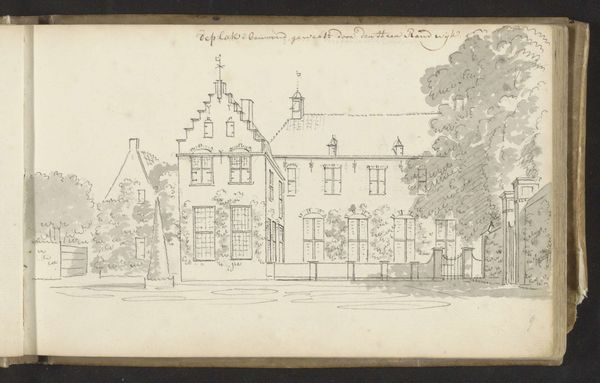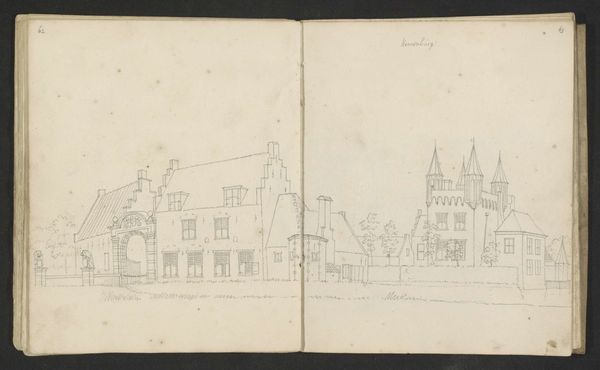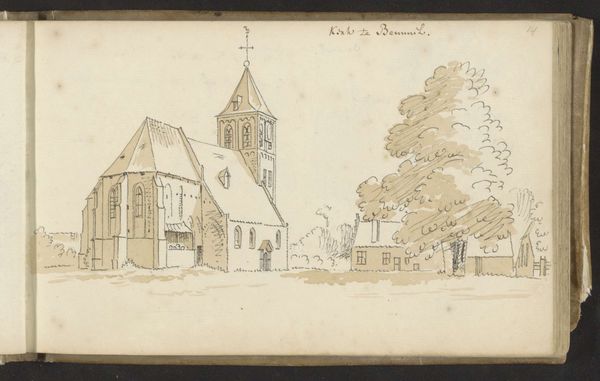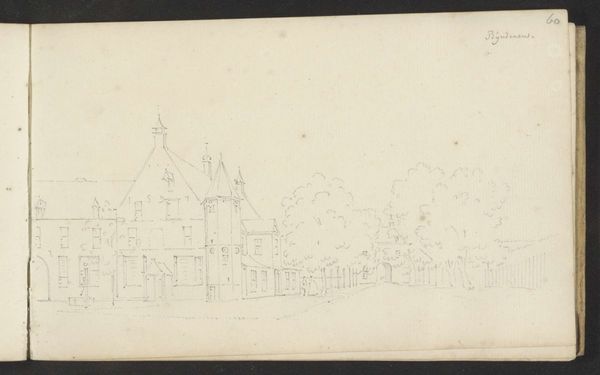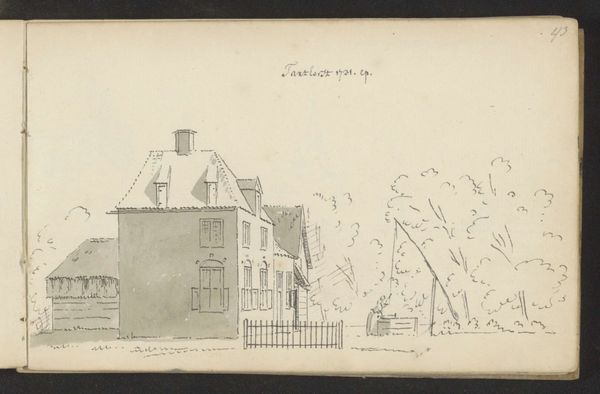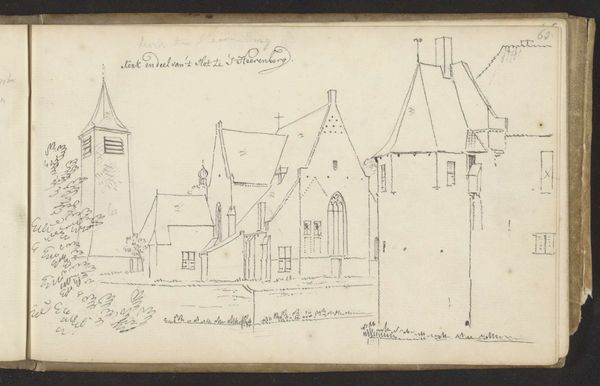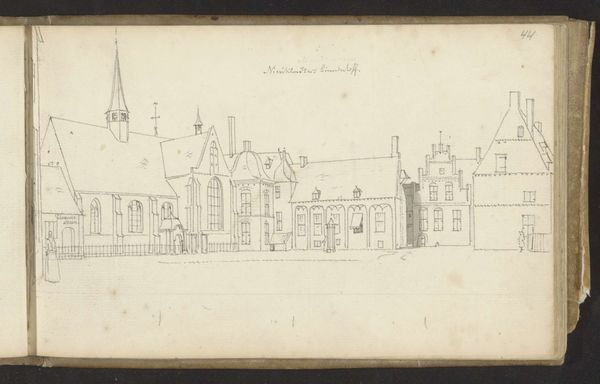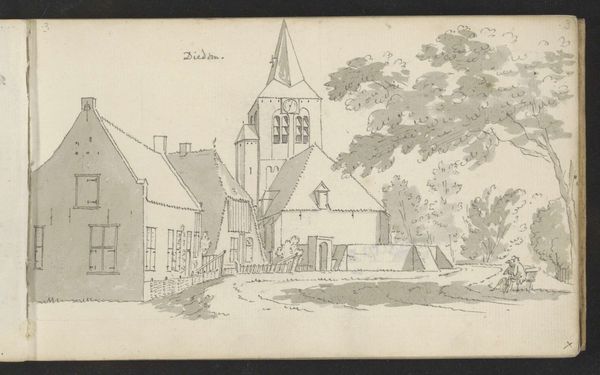
#
aged paper
#
pen sketch
#
sketch book
#
personal sketchbook
#
ink drawing experimentation
#
pen-ink sketch
#
pen work
#
sketchbook drawing
#
storyboard and sketchbook work
#
sketchbook art
Copyright: Rijks Museum: Open Domain
Abraham de Haen the Younger created this pen and brown ink drawing, titled 'De Kellerij of Kellenarij te Putten', sometime in the first half of the 18th century. De Haen came from a family of artists in the Netherlands during a period marked by significant economic and social stratification. The Dutch Golden Age may have passed, but class distinctions remained stark. The artist, positioned within a society that valued commerce and status, depicts a scene that speaks to both. The Kellenarij, likely a tax collection or storage facility, represents the tangible structures of governance and economic control. This isn't just a neutral depiction. It's an emotional landscape, asking us to consider how these buildings represented security for some and potentially, oppression for others. The detailed rendering invites us to reflect on the stories held within these walls.
Comments
No comments
Be the first to comment and join the conversation on the ultimate creative platform.

